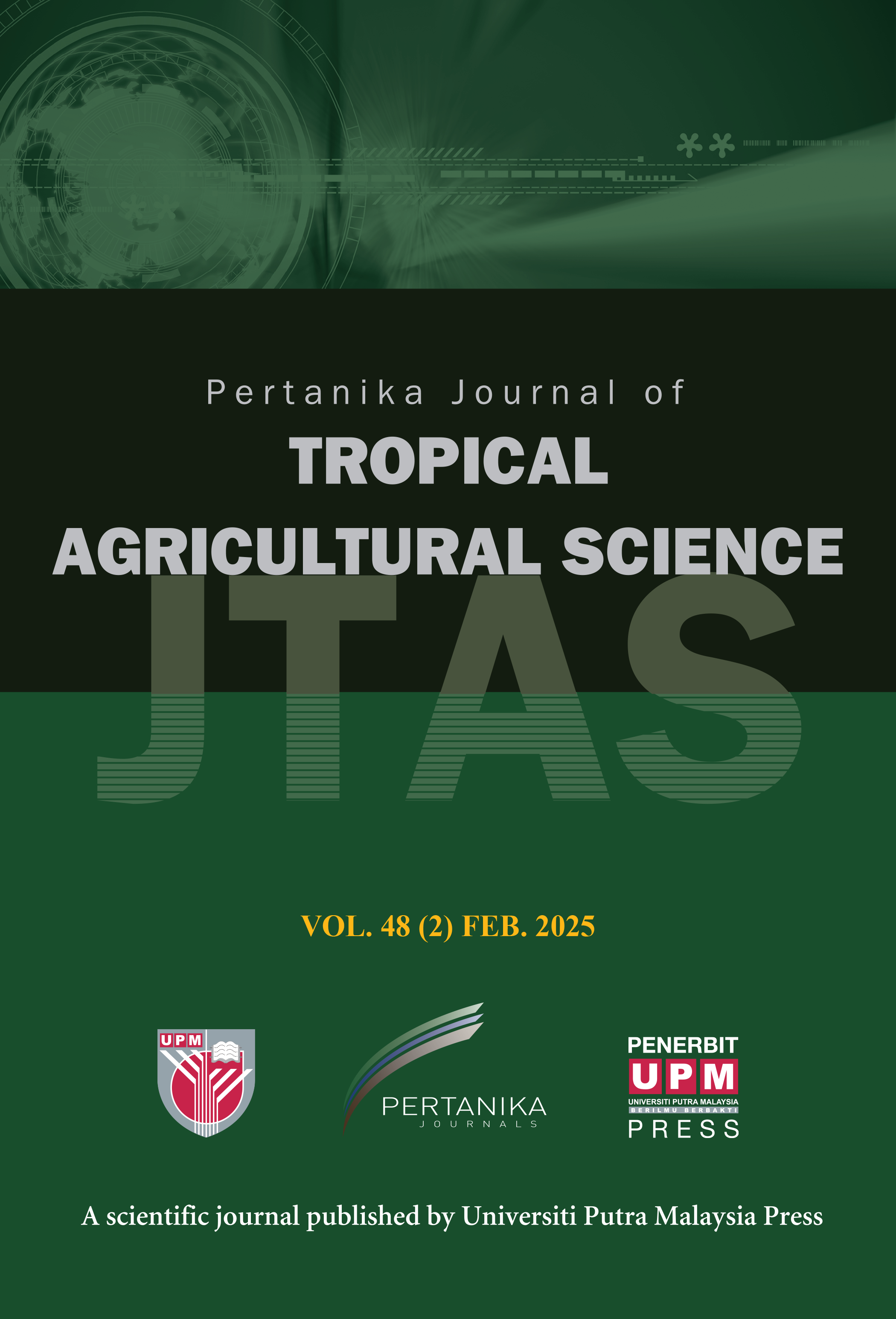PERTANIKA JOURNAL OF TROPICAL AGRICULTURAL SCIENCE
e-ISSN 2231-8542
ISSN 1511-3701
Assessing Resistance to Powdery Mildew in Mung Bean: The Role of Phenolic Compounds and Phenylalanine Ammonia-Lyase (PAL) Activity
Alfi Inayati, Trustinah, Rudy Soehendi, and Eriyanto Yusnawan
Pertanika Journal of Tropical Agricultural Science, Volume 48, Issue 6, November 2025
DOI: https://doi.org/10.47836/jtas.48.6.15
Keywords: Mung bean, phenolic, phenylalanine ammonia-lyase (PAL), powdery mildew
Published on: 2025-11-25
Powdery mildew caused by Erysiphe polygoni is one of the main pathogens on mung bean that causes significant yield loss. This study determined the agronomic performance and physio-biochemical activities of twelve mung bean genotypes under powdery mildew infection. The experimental design was arranged in a completely randomized block design with three replicates. Initial disease symptoms appeared 14 days after planting (DAP) and then progressed to 31.7% in the moderate genotype (Sampeong) and 87.2% in the susceptible genotype (G2). The study suggested no significant correlation between chlorophyll contents and the severity of powdery mildew in mung bean genotypes; however, the disease negatively affected the yield in susceptible genotypes. Total phenolic and flavonoid contents in leaves showed a positive relationship with disease severity and mung bean resistance in the G6 genotype, in Vima 1. and Sampeong cultivars. Our findings showed that the phenolic compounds including phenylalanine ammonia-lyase (PAL) and tyrosine ammonia-lyase (TAL) activities in the leaves were important factors for mung bean resistance to powdery mildew and this interaction impacted the growth and productivity of mung bean plants.
ISSN 1511-3701
e-ISSN 2231-8542




